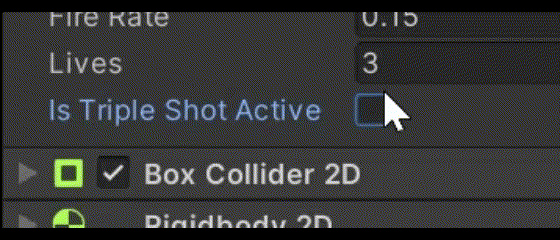Summary
This article delves into mastering Unity Prefabs, a crucial skill for any game developer looking to enhance their asset management and customization capabilities. Key Points:
- Utilize Prefab Instances for non-destructive editing, allowing individual modifications while preserving the original Prefab template.
- Leverage Prefab Variants to create context-sensitive asset variations that adapt dynamically to game events and enhance player experiences.
- Master Nested Prefabs for better organization of complex scenes, reducing redundancy and improving overall scene management.

Master Prefab Manipulation: Unlock Efficiency and Innovation in Game Design
In game design, effectively utilizing prefabs is a powerful way to enhance efficiency and creativity. To further customize the prefab, create three separate duplicates of it. Next, go to the hierarchy view and select the first laser prefab. In the inspector view, locate the position transform property and set the X-coordinate value to 0. For the other two duplicates, set their X-coordinate values to -1 and 1 respectively. This approach enables designers to create intricate gameplay elements with minimal resources. By reusing and combining these prefabs, developers can build complex scenes and interactions, offering near-endless possibilities for innovation and creativity.
Once we place it into the hierarchy window, we'll create two duplicates and arrange them to make it look like they're originating from specific points on our player game object.

When it comes to visual representation, it's crucial to ensure that the prefabs are positioned correctly and aligned along the y-axis with the wings of the game object. This alignment is essential as it determines where the "lasers" will be "firing" from.

Be sure to transfer the new Triple Shot game object into the Prefabs folder, and subsequently delete it from the Hierarchy View.

The next step involves creating a new prefab based on our previous work. This process leverages the parent-child relationship between game objects to enhance efficiency. Rather than utilizing the Instantiation() method multiple times, we can streamline performance by calling the Instantiate() method just once. Start by creating an empty game object and naming it "Triple Shot." Next, select the three duplicates of our prefab and drag them into this newly created empty object. Finally, move the "Triple Shot" game object into the project view's prefab folder to finalize your new prefab creation.

Next, we need to establish a behavior for the Triple Shot. This behavior will necessitate specific attributes and methods designed to manipulate those attributes. To form a coherent logic for this game object, it's important to remember that it functions as a power-up. The player script must be capable of locating the GameObject in order to instantiate it effectively. Therefore, we'll create a reference data type variable at the beginning of the Player script to facilitate this discovery process. Additionally, this variable must be serialized so that we can create an accessible slot in the Inspector interface, allowing us to easily drag and drop the prefab into place and complete the connection between the script and its corresponding prefab/GameObject.

When a player collects a power-up during gameplay, it triggers its activation. The game object must then inform the player about the collection, enable its effects, and after a designated duration, revert to its original state.
The player script must have the capability to verify if a power-up has been collected. To achieve this, we will introduce a private boolean variable called _isTripleShotActive and initialize it as false at the beginning of our class. This private variable will function like an electrical switch, controlling the state of a method known as Instantiate(). By default, this boolean is set to false because the activation of the power-up will turn on this reference data type variable through the Instantiate() method, which is linked to the TripleShot Prefab.



To initiate the process of referencing our triple shot prefab, we first need to establish a variable within our Player class. This involves declaring a private GameObject named _tripleShotPrefab. Additionally, we will annotate this variable with [SerializeField] above it, allowing us to conveniently drag and drop the TripleShot prefab from our Assets folder into the designated slot in the Player script, thereby linking it to the corresponding GameObject.


Within our Update() method, attention turns to the FireLaser() function. At this point, we're capable of instantiating one instance of _laserPrefab. It's essential to introduce a control statement that checks whether (_isTripleShotActive) is set to true. If it is, we proceed by creating an instance of (_tripleShotPrefab) at the location of this game object with no rotation (Quaternion.identity). If not, we'll default to instantiating (_laserPrefab,...).


To evaluate the instantiation method without having to create the Power-up, we need a way to toggle the "light switch" for this power-up on and off. This "light switch" refers to the private boolean that monitors whether _isTripleShotActive is set to false. The [SerializedField] attribute we previously added enables us to access this boolean variable, providing control over the Instantiation() method. It creates an interactive box within the Player script in the Inspector, which can be easily toggled with a simple click of our left mouse button.




Thanks to the GameDevHQ Tutorials by Jonathan Weinberger, I've learned how to extend the creative process to create a more visually appealing prefab using minimal resources while applying the concept of reusability. Not only has it enabled me to enhance my game's mechanics, but it's also optimized performance using prefab techniques (childing game objects to a parent). I'm going to keep experimenting with new features and continue refining my skills to create even more exciting gameplay experiences. Next up ... The Power Up!


 ALL
ALL
Discussions